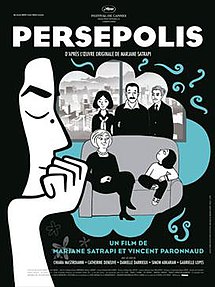However, Boyer's discussion about getting graphic novels into the hands of patrons who might not be normally inclined to consider the format struck a cord with me. Just last week at Barnes and Noble, a customer came up to me and asked for books about Holocaust survivors. Of course, my immediate thought was Maus, which I showed her and recommended heartily. She seemed to think graphic novel could only be fiction, and she wanted nonfiction, so I tried to explain how Speigelman uses visual metaphor to portray the horrific events that his father lived through. She seemed reassured, but still hesitant, so I also showed her the handful of other Holocaust memoirs we had and told her to try reading a few pages of each. Later, she came by to thank me and showed me she had purchased Maus volume 1 and a book of short essays from Holocaust survivors. Success! Maybe she will like the format and maybe she won't, but at least now she knows the format can be used for nonfiction, and knows she has a greater choice in what materials are available to her.
Let's talk about Deadenders. I'm about halfway through it and so far I have mixed feelings about it.

First what I liked in mini comic form:
I tried anyway. Now some bullet points to finish off the likes.
- The overall story. I'm a sucker for futuristic dystopias with a mysterious premise. Why is there no weather? What was the cataclysm? Why can Beezer see these visions? I want to know!
- The complex relationships between the characters. Beezer is dating Sophie, who is flirted with by Hal who doesn't like Beezer, but still helps him out. Sophie then leaves Beezer for Daniel who may have loved her at another time but doesn't remember. Jasper is Beezer's best friend who is daing Danica, until he dies, at which point she and Beezer start hooking up regularly. The drama.
- The way the story changed perspective. This kept it feeling fresh and just happens to be one of my favorite writing styles.
Now, what I had problems with:
- Beezer is so angsty/angry all the time, with basically everyone around him. WHAT ARE WE YELLING ABOUT? He very much reminded me of Harry Potter circa book 5. So many bottled up emotions that could just not be contained, except when anyone asked him to talk about it, in which case he clammed right up.
- The stereotypes of boys going out and doing all the crazy, dangerous, exciting stuff, while the girls hung out and waited passively for things to happen and then nursing their guys back to health.
- The constant ever present drug use. Personal opinion, just not my thing.
- What's up with the weird Archie callback?





